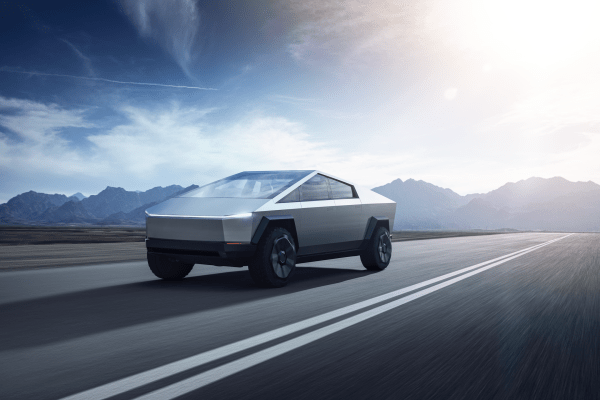
Amid a packed afternoon of announcements from Tesla around innovations the company is pursuing to slash the cost of electric vehicle production and energy storage through better battery design, the company said it’s made new advancements in material science for anodes and cathodes — key components of the lithium-ion batteries that are the heart of all of its products.
Tesla took an all-of-the-above approach to improving its battery from the manufacturing process that is still under development to the materials used in cathode and anode, the basic building blocks of any battery system.
The upshot: a reduction in cost of the cathode and anode materials, while boosting performance that on its own could extend the range of its batteries by 20%, Tesla said.
On the anode side, the company is looking at ways to integrate more silicon into its batteries by using metallurgical grade silicon. One of the most abundant materials on earth, most of the silicon used in microchips, batteries, and even solar panels has been highly processed using expensive treatments to make it work for different applications. With batteries, the issue is its propensity to degrade when it’s fully charged with lithium.
“With silicon, the cookie crumbles and gets gooey,” said Elon Musk during the company’s “battery day” presentation. That gooeyness means that the material loses its energy retention and storage capacity. Every time a battery charges, the degradation means shorter life cycles for the battery.
That’s why most companies use some sort of treatment on silicon to make the material hardier — or use as little silicon as possible in their batteries. “They enable some of the benefits of silicon, but they don’t enable all of it and they’re not scalable enough,” said Andrew Baglino, the company’s SVP of powertrain and energy engineering.
Instead of throwing the silicon out, Tesla said it is working with a new treatment method that can take cheap, metallurgical grade silicon and incorporate that into its new battery designs.
“What we’re proposing is a step-change in capability and a step-change in cost and to go to the raw metallurgical silicon itself,” said Baglino. “Design for it to expand [and] think of it in the electrode design … If you use simple silicon it is dramatically less than the silicon that is used in batteries today.
Baglino expects that by using new treatment methods, the company could drop the cost to $1.20 a kilowatt hour.
That involves starting with raw, metallurgical silicon that’s stabilized with a low-cost, elastic, ion-conducting polymer that’s integrated into the electrode with a highly elastic binder.
That innovation alone could increase the range of Tesla vehicles by 20%. “When we take that anode cost production, we’re look at a 5% dollar-per-kilowatt reduction at the battery pack level,” Baglino said.
But the company doesn’t intend to stop at the anode. It’s also looking at using different material science innovations to increase the efficiency of the cathode too.
Both the anode and the cathode need to be able to maintain their structure while having charged particles bounce off of them. They’re basically storage containers for electricity even as that electricity is moving around — charging and discharging.
Baglino and Musk likened the materials to bookshelves, where the charged particles are the books and the shelves are the cathodes.
Batteries in this analogy are basically libraries, where the cathodes store the books and the anodes are the librarians moving the books (energy) out into the world where they can be read or used (I think I’ve taken that analogy about as far as it can go).
“You need a stable structure to contain the ions. You want a structure that hold its shape with ion. As you move the ion back and forth you lose cycle life and your battery capacity drops very quickly,” said Musk.
Several different materials can be used as cathodes, but the cheapest, by far, is nickel. It also has the highest energy density. But most batteries use cobalt because it’s a more stable material.
Tesla said today that it is working on a way to stabilize nickel for use as a more robust storage material. That means the nickel can store the energy (books) without the risk of toppling or degrading.
“We can get a 15% reduction in cathode dollar per kilowatt hour,” said Baglino.
Musk said that Tesla wouldn’t be throwing out its existing chemistries, but that the addition of new nickel-based batteries would enable the company to pursue some of its other goals.
“We need to have a three-tiered approach to batteries,” Musk said. “Iron — medium range, nickel manganese as medium-plus, and high nickel for the Cybertruck and the Semi.”

Recent Comments